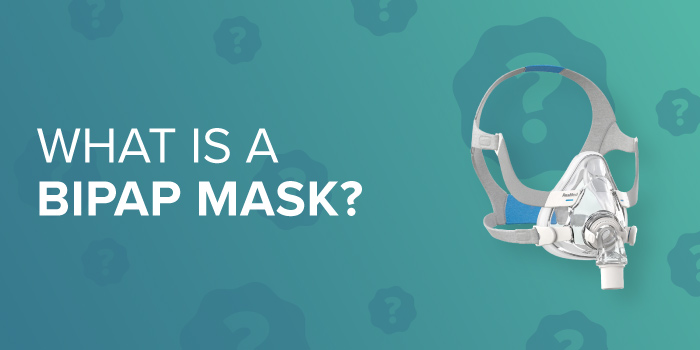Mar 3rd 2023
The Differences Between CPAP and BiPAP Masks

Sleep apnea is a potentially serious sleep disorder in which breathing is briefly and repeatedly interrupted during sleep. It can cause a person to wake up frequently at night, causing poor sleep quality and daytime fatigue.
Fortunately, there are several treatments available for sleep apnea, the two most popular being continuous positive airway pressure (CPAP) and bilevel positive airway pressure (BiPAP) therapies.
How do you know which therapy is right for you? The short answer is that your doctor will determine the best treatment for you. In this blog post, we’ll take a close look at the differences between CPAP and BiPAP therapies and why each one is used to help treat sleep apnea or other breathing disorders.
Who Needs CPAP or BiPAP Therapy?
Doctors typically prescribe CPAP or BiPAP therapy to patients who are diagnosed with the following:
- Sleep apnea
- Chronic obstructive pulmonary disease (COPD)
- Neuromuscular disorders
- Other related conditions
Since both types of therapy require a doctor's prescription by law, every patient must speak with their primary care physician before using either therapy to ensure it is the proper treatment for them and that they are using it correctly.
What Is CPAP Therapy?
CPAP therapy is a medical treatment for sleep apnea, a condition where a person's airway becomes obstructed during sleep, causing them to stop breathing for short periods.
During CPAP therapy, a machine delivers a steady airflow through a mask worn over the nose and/or mouth. The air pressure keeps the airway open, preventing it from collapsing and allowing the person to breathe normally throughout the night.
CPAP therapy is a highly successful treatment for sleep apnea and can help reduce symptoms such as:
- Snoring
- Daytime sleepiness
- Fatigue
- Morning headaches
It can also improve overall health outcomes by reducing the risk of cardiovascular disease, stroke, and other related health problems associated with sleep apnea.
CPAP therapy can also help those diagnosed with COPD or neuromuscular disorders.
What Is BiPAP Therapy?
BIPAP therapy is another form of non-invasive positive pressure ventilation used to treat respiratory conditions including sleep apnea, chronic obstructive pulmonary disease (COPD), and other breathing disorders.
BIPAP therapy delivers two different air pressure levels during inhalation and exhalation. During inhalation, the machine delivers higher pressure to help the person breathe in more air. During exhalation, the device reduces the pressure to make it easier to breathe out.
BiPAP machines are often used by patients who cannot tolerate the constant pressure of a CPAP machine or for individuals who need more support to breathe. The two pressure levels delivered by the BiPAP machine are IPAP (inspiratory positive airway pressure) and EPAP (expiratory positive airway pressure).
Let's look more closely at each pressure level.
IPAP
The IPAP is the pressure delivered during inhalation, which helps open the airways and allows air to flow into the lungs. The IPAP setting is typically set to a higher pressure than EPAP. However, the level of required pressure will depend on the individual's needs and may need to be adjusted over time.
For example, someone with severe sleep apnea or COPD may require a higher IPAP to help them breathe more easily. Someone with milder symptoms needs a lower IPAP to achieve the same effect.
EPAP
The EPAP is the pressure delivered during exhalation, which helps keep the airways open and prevent them from collapsing.
The EPAP setting is typically set to a lower pressure than IPAP. The difference between IPAP and EPAP is the pressure support, which is the amount of pressure delivered during inhalation above and beyond the baseline pressure delivered during exhalation.
EPAP helps to maintain a positive pressure in the airways during exhalation, which prevents the airways from collapsing and improves oxygen exchange in the lungs.
This setting can benefit individuals with conditions that cause airway obstruction, such as sleep apnea or COPD. The pressure levels required for IPAP and EPAP will vary depending on the patient's needs and may be adjusted to achieve the best possible outcome.
What Are the Differences Between the Therapies?
BIPAP therapy differs from CPAP therapy because it provides two distinct pressure levels. This makes it more comfortable for people with certain breathing conditions and can reduce the effort required to exhale.
BIPAP therapy is often used for people who cannot tolerate the constant high pressure of CPAP therapy or those with more severe respiratory conditions requiring more support to breathe properly.
Do You Need a CPAP Mask or BiPAP Mask?
While CPAP and BiPAP therapies provide breathing assistance in different ways, it’s helpful to know how the two are similar, especially when it comes to buying the equipment you’ll need for your treatment.
Both CPAP and BiPAP therapies are administered through machines (i.e., CPAP machine or BiPAP machine). However, both types of machines can use CPAP masks.
With numerous types of CPAP masks available, you don't need to search specifically for a BiPAP mask if you need BiPAP therapy. There is no such thing as a BiPAP mask. The same masks are used for both types of therapy: CPAP and BiPAP.
How to Pick the Right Mask for a BiPAP Machine
When looking for a mask for BiPAP therapy, paying attention to the seal is important. If your prescription is more than 20cmH20, you should look for a mask with a heavy-duty seal.
This prescription requires more intense pressure, so the mask and machine can handle it. If you are unsure, refer to your physician for help.
If in doubt, always consult your doctor.
BiPAP Therapy Machines at GoCPAP
Are you looking to purchase or replace a BiPAP machine or CPAP/BiPAP mask? At GoCPAP, we carry BiPAP machines from major brands like ResMed.
We are one of the leading carriers for all things BiPAP, so you can count on us to provide the latest and most reliable equipment available.
Click here to learn more about BiPAP machines.











